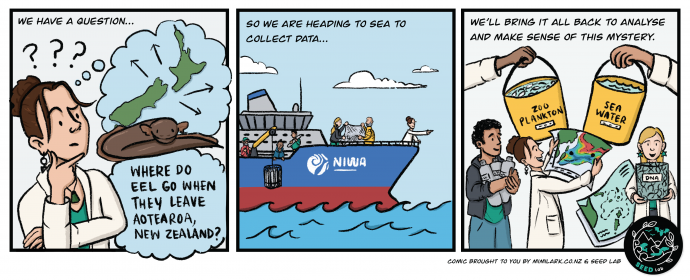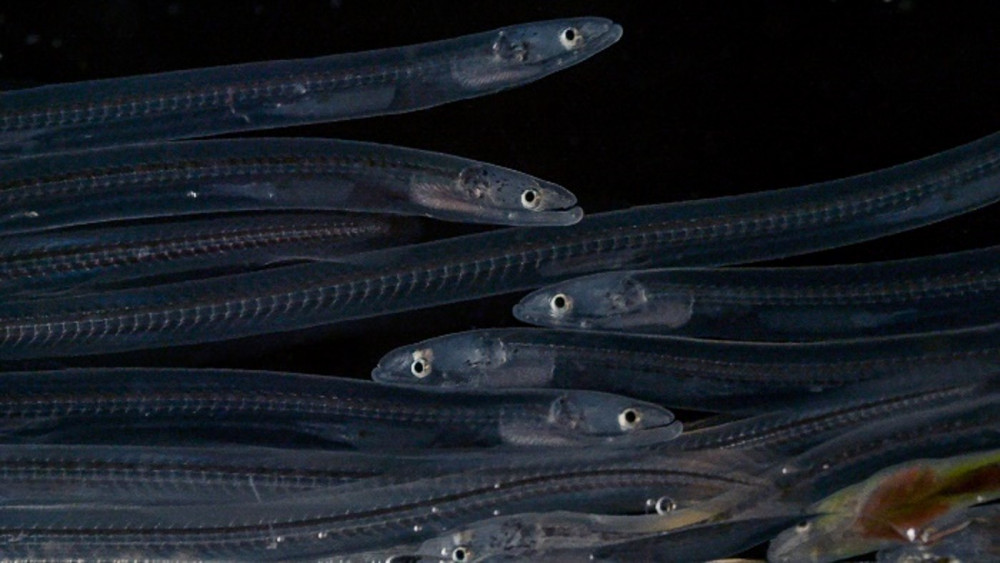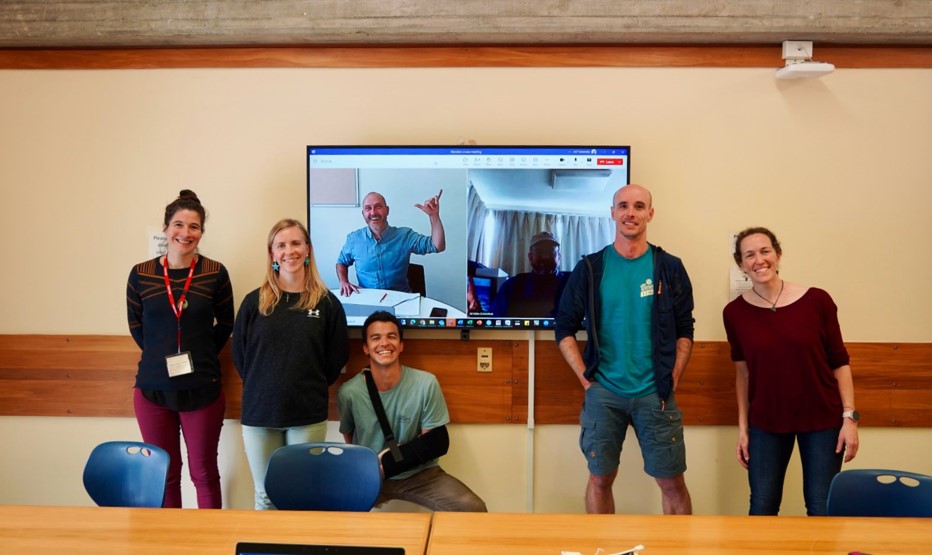Research
Published 21 June 2024The Unseen Voyage: Tracing the Elusive Migration of Tuna (Eels) to and from Aotearoa

Aotearoa New Zealand’s longfin and shortfin eels, or tuna in te reo Māori, undergo one of the animal kingdom’s most mysterious migrations
Previous attempts to identify the migration routes of tuna have relied on satellite tracking, which is often hindered by tag detachment, failed satellite transmission, and predation. Dr Sabadel and her team are hoping to reconstruct the journeys of these enigmatic taonga using an alternative, indirect method, based on biochemical markers known as stable isotopes.

Anguilla australis schmidtii glass eels, with visible eye lenses and ossified vertebrae. Photo: NIWA.
Isotopes are different forms of an element. For example, carbon has three naturally occurring isotopes, all with 6 protons and electrons but varying numbers of neutrons: carbon-12 (with 6 neutrons), carbon-13 (with 7 neutrons), and carbon-14 (with 8 neutrons). However, only carbon-12 and carbon-13 are stable, as carbon-14 is a radioactive isotope that eventually decays into another element. Among the stable isotopes, carbon-13 is slightly heavier than carbon-12 due to its extra neutron. This small difference significantly impacts the relative abundance (or ratio) of these stable isotopes during natural processes, such as photosynthesis and respiration, creating geographical variations. In aquatic systems where tuna live, factors like temperature, salinity, and ocean currents also influence these ratios, contributing to a distinct isotopic landscape. Marine animals like tuna in their first life stages incorporate and store in their tissues these specific isotope ratios from their environment as they feed. Therefore, analysing stable isotope ratios in an animal’s continuously growing tissues, such as eye lenses and vertebrae, can provide scientists with information about their whereabouts as they developed. These ratios can then be matched to an isotope map (or isoscape) to trace their historical movements.
To kick-start this project, Dr Sabadel and her team will be embarking on their own voyage in October 2024. They will collect environmental samples from the South Pacific Ocean to measure spatial variation in stable isotope abundance and begin building isoscapes of multiple elements including carbon, nitrogen and sulphur. Later, they will compare this map to the isotope ratios inside the eye lenses and vertebrae of tuna from our awa, to reconstruct their historical migratory routes. The team will also be net-sampling and collecting samples of environmental DNA and RNA across the South-Pacific to confirm the presence of tuna in specific areas.
This unique study will provide critical data to better understand the life history of tuna and inform the protection of these taonga; for example, by shedding light on their vulnerability to climate change. This project may also pave the way for similar studies on other migratory marine species.

Marsden team at our first voyage planning workshop. From left to right: Dr Moira Décima (Scripps, USA), Therese Miller (PhD student at Cawthron/University of Auckland), Assoc. Prof Xavier Pochon (Cawthron/University of Auckland), Alex Che (PhD student at Auckland University of Technology), Dr Mike Miller (former-University of Tokyo, Japan), Dr Erik Behrens (NIWA) and Dr Amandine Sabadel (Auckland University of Technology/NIWA). Photo: Provided.
RESEARCHER
Dr Amandine Sabadel
ORGANISATION
Te Wānanga Aronui o Tāmaki Makau Rau Auckland University of Technology
FUNDING SUPPORT
Marsden Fund
CONTRACT OR PROJECT ID
AUT2203
